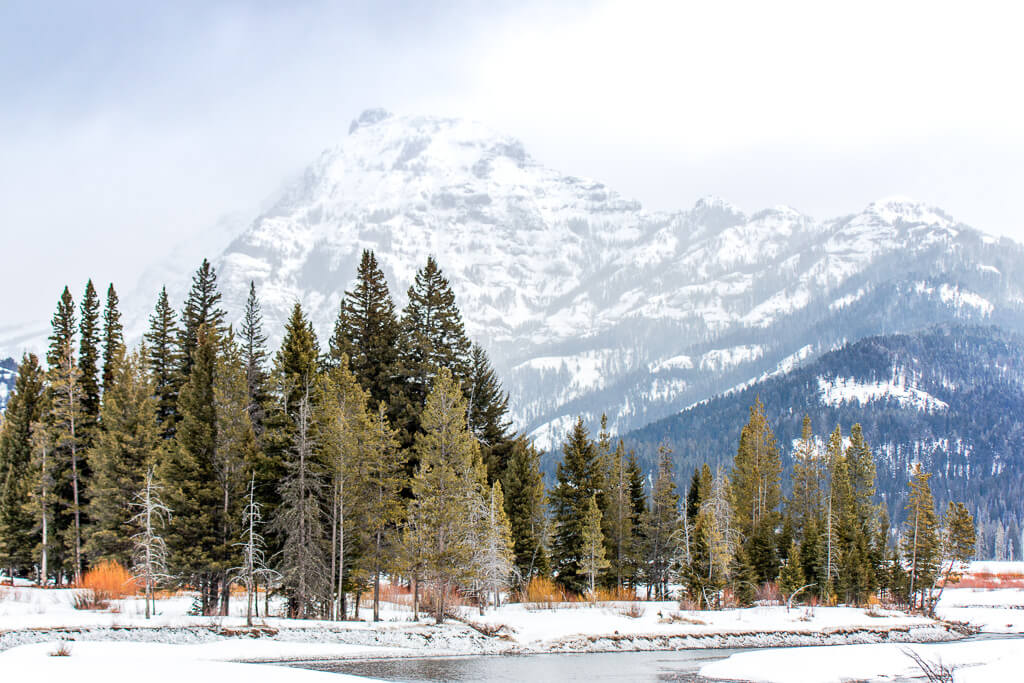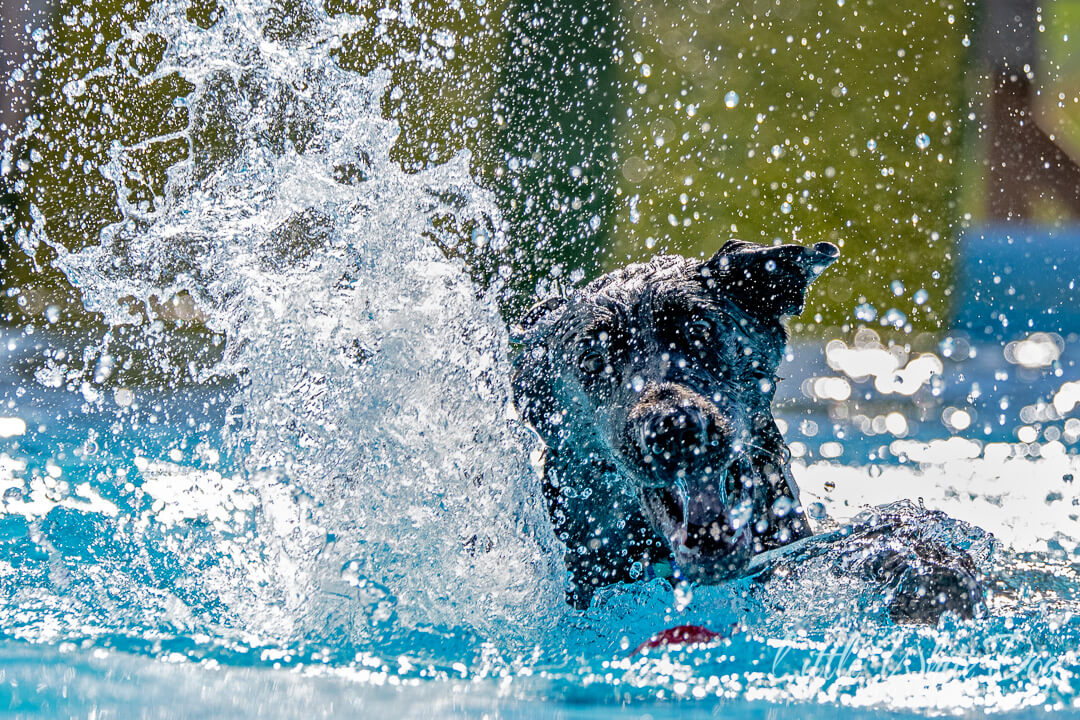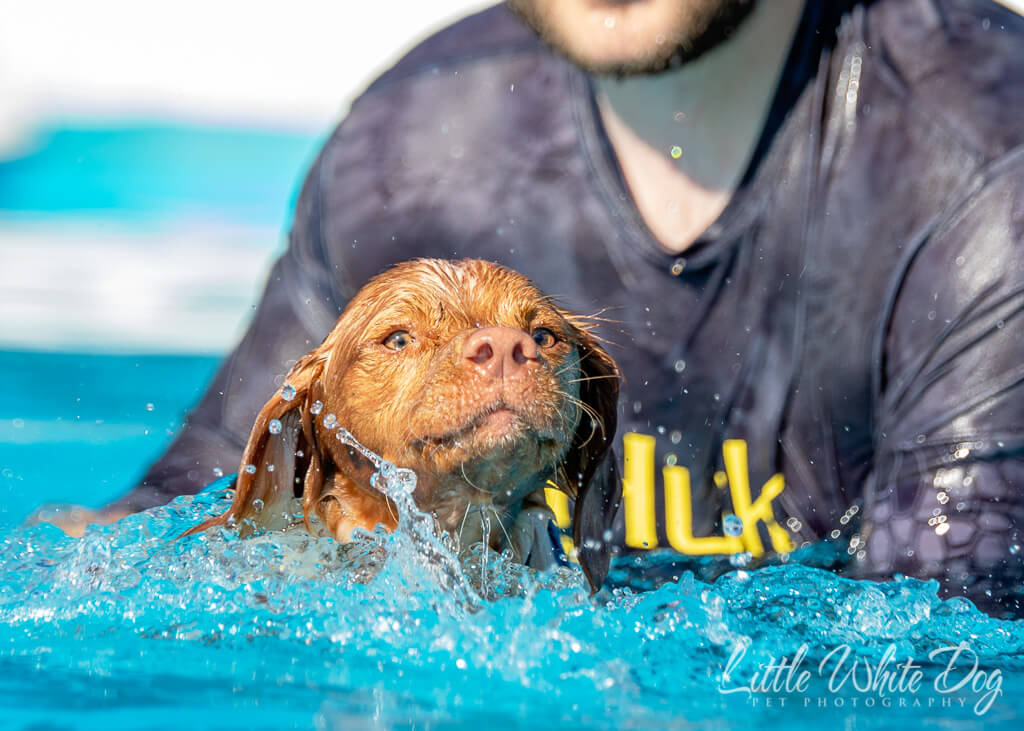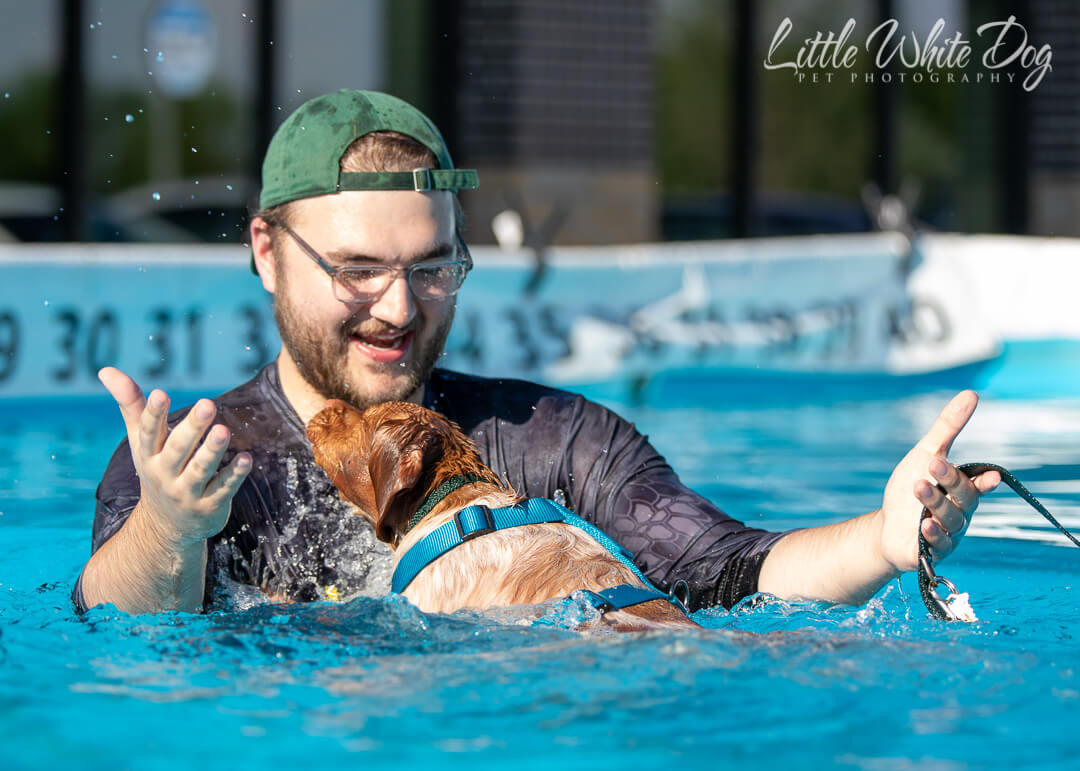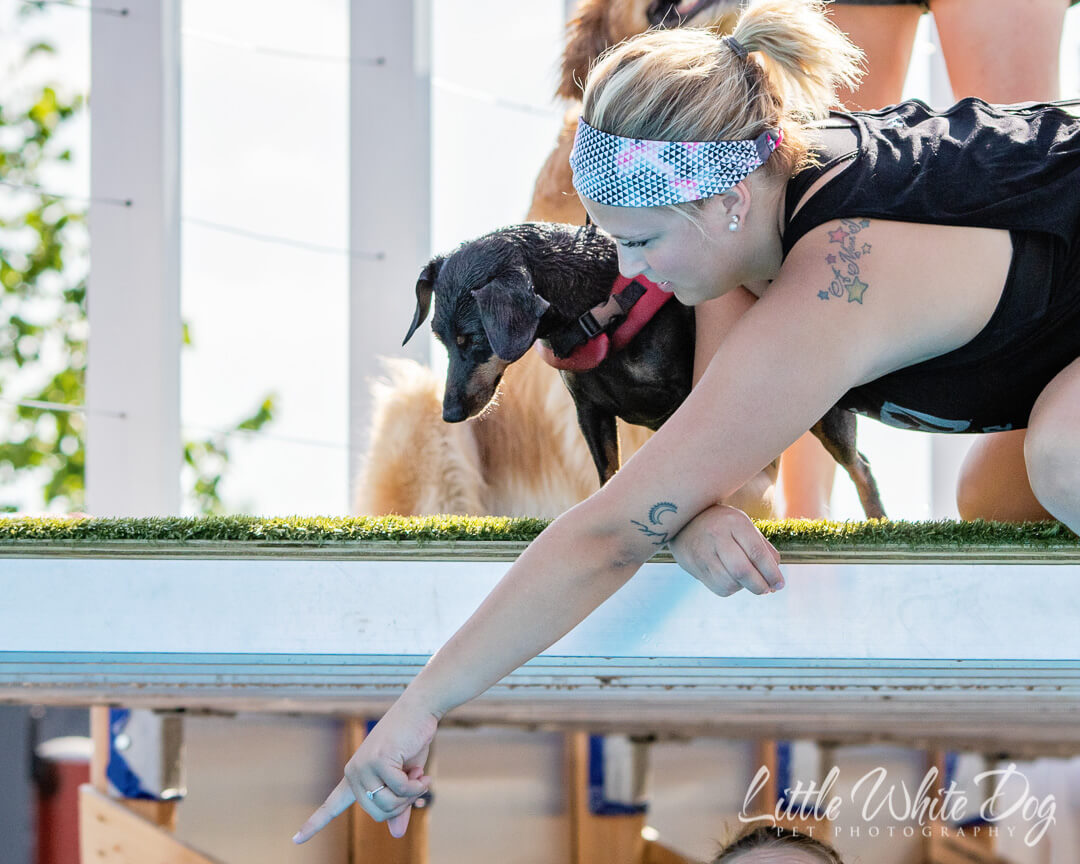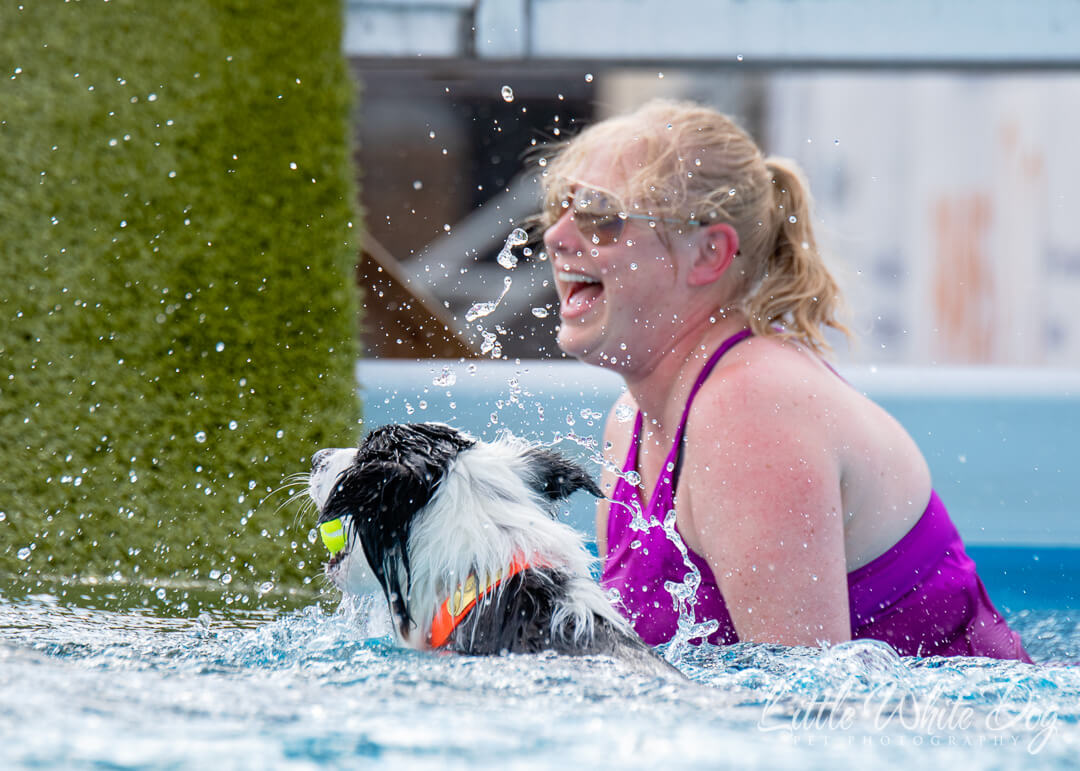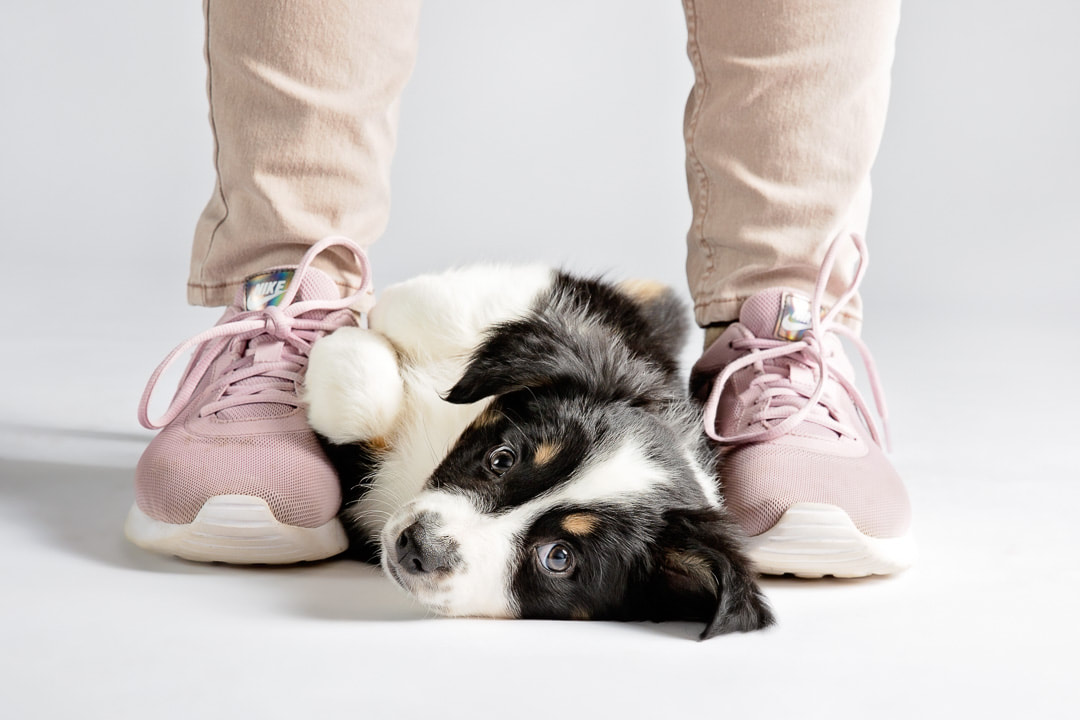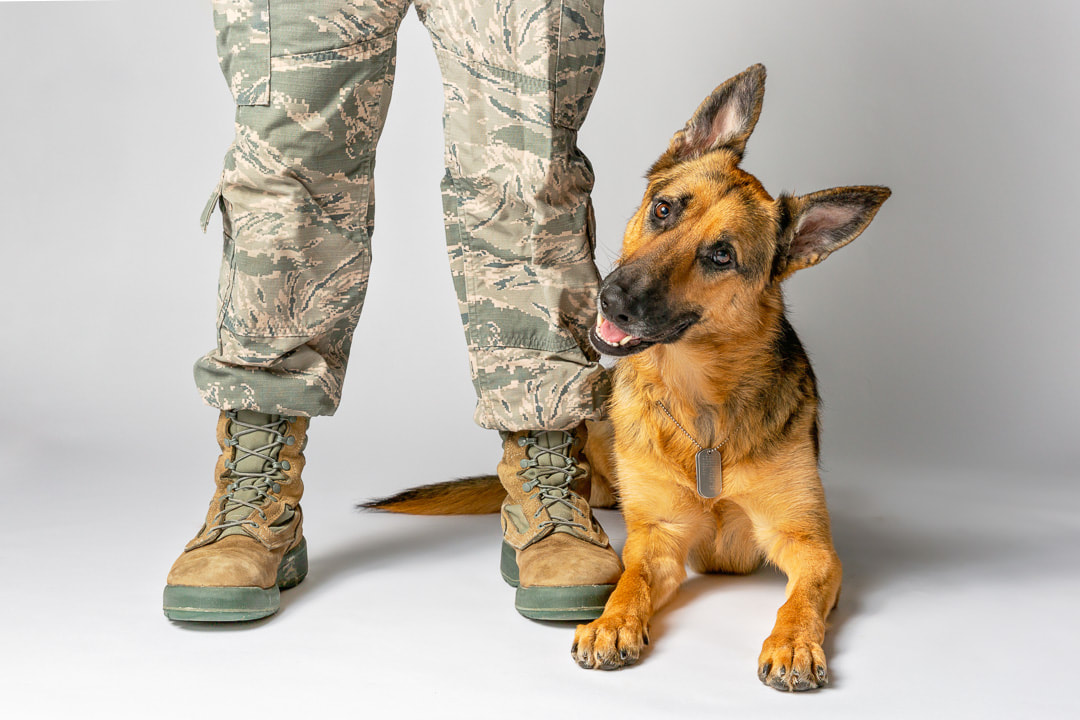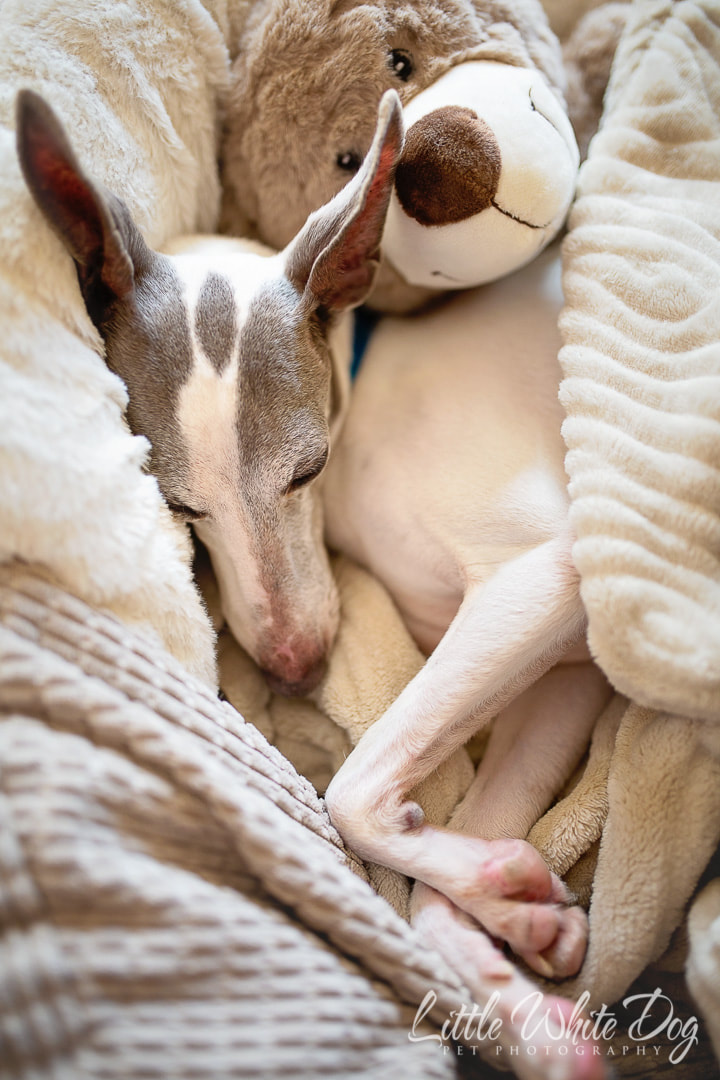That's a great brush, I bet it makes makes beautiful paintings.Just a bit of photographer humor. ;O) Photographers have people say to them all the time, "I wish I had a camera like that so I could take great pictures." It can't come as a surprise when I say, you don't have to have an expensive camera to take great pictures. Be it smart phone or digital camera, there are always things you can do to get images that come out more like what you envision in your mind. First, let me start off by saying, whether you're a hobbiest or have chosen photography as your profession, the only thing you should be comparing your pictures to are your previous pictures. I don't compare my images (not anymore at least) with those of other photographers or I'll find something wrong with my work every time I turn around. That's just how we're wired. The grass is always greener and all that. I look at other photographer's work as art and inspiration. Second, if you're constantly looking at what's wrong, then that's all you're going to see. You need to concentrate on what's right with the images that you take. (If you haven't already seen the TEDx Talks with National Geographic photographer Dewitt Jones called, Celebrate What's Right With The World, I HIGHLY recommend it. I will link it below.) We all have a unique way of taking pictures depending on what we're using to take them. The way I use a camera is not the same way someone else would use it. Yes, the settings might be similar, but the technique is most likely very different (and subconscious as well). Using a camera is also much different than using a smart phone. I can't get a good picture with my phone ever!!! I try to use it the same way I use my camera and it just doesn't work that way. So, I'm going to give it to you straight... The one thing that will change how your images turn out is practice. And, I mean every day practice. You will be doing certain things subconsciously when you take a picture and you may never figure out what they are. We are creatures of habit, so even with taking pictures (be it with a camera or phone) you will almost always be doing certain things the same way. A perfect example is, the distance that you choose to get from your subject usually starts out the same each time, and that distance is going to be different from the distance that your friend might start out with. If there are 5 people getting ready to take a picture of a group of teenagers going to the prom, they are not all going to try to stand in the same place. They will each automatically go stand where they normally would to take a picture. Then some will zoom in and some won't. Want to make practice fun? Make it a game or challenge! Start with one thing that you'd like to change about your images and work on that. If you're always zooming in on pictures that you took on your phone then you might (subconsciously) be drawn towards a more cropped look. Tell yourself that every time you take a picture today, you will have to take 2 steps forward before you snap the shutter. So, aim, step, step, snap. You can even take a picture before you step and after to compare them. (I would compare them all at the end of the day just to see which position has the most pictures to your liking.) Once you're happy with something that improves your images move on to something else, but keep doing whatever it is that is now working for you. Do you like black and white images? For one whole day, when you take a picture, take two and change the second to black and white so that you can compare them. (This is easiest done on a smart phone, but there is actually a black and white setting on a DSLR, too if you don't use editing software.) Black and white photography is actually an art unto itself. I am a huge fan and spent a couple of years on a personal project of b&w images of downtown Sioux Falls. Some scenes lend themself to b&w and some don't. If you spend some time comparing you'll soon discover which scenes work and which won't before you even take the picture. I really encourage you to explore different types of photography just to see what gets you most excited. Think about making these a one day (or more if you want) projects: Landscape photography: Go for a drive and photograph landscapes without zooming into anything in particular. Examples would be: a farm, a cityscape, the mountains, a field of wind turbines, a lake, etc. Nature photography: Go on a hike and photograph birds, flowers, water falls, trails, anything that looks interesting through the lens. (Usually, these things photograph best when you zoom in on them.) Macro photography: For one day, only take pictures of things "zoomed" all the way in. (Get as close as you can instead of zooming in with your device). This could be a drop of water on a leaf, one word on a page in a book, the strings of a guitar, or a dog's paw. ;O) Street photography: This involves images of people usually outdoors in a particular city or area. (If you're familiar with Humans of New York, this is street photography at its best.) These images might be of workers, shop owners, people walking around downtown, or just everyday happenings in any given place. Vacations are great for street photography. You're able to document where you've been with more interest when including the people who live there. If you want to up your game with photography, don't worry so much about the camera you have. Figure out what types of photography you love and then practice, practice, practice! By the way, I was serious about taking a look at Dewitt Jones' TEDx Talk, too. It's less than 20 minutes long and I think you'll find him very entertaining with a great message, too. :O) Celebrate What's Right With The World - Dewitt Jones Need proof that it's not the camera that "makes great pictures"... Take a look at these 2012 Olympic photos shot by photographer, Dan Chung with a smartphone! Nine years ago!! Dan Chung's Olympic smartphone photoblog It doesn't matter what you use for taking pictures. Use whatever you've got and practice making art. Oh, and print something for yourself!!! What? You haven't heard of dock diving?? It's only the coolest sport around for those hot summer months! When a sport involves you, your dog, toys, a huge pool and lots of hoots and hollers you know it's going to be fun! After the first half of this year's shenanigans, I couldn't wait to see these dogs. My favorite is the beginner classes. Watching the dogs go from maaaaaybe sticking their paw in the water to full on diving off the dock is what summer is all about for me. I'm not a big fan of the heat so being where there's lots of splashing (and I mean LOTS of splashing sometimes) is a good end to the day. Look at the pride on Cane's face! He just accomplished something huge - getting that toy out of the water! I think he's most proud of the fact that he did it without even getting wet! This dog just learned that it's ok to actually get in the water to get her toy. Myra might not be the most graceful of swimmers yet, but she'll get there. (Did I mention there could be a LOT of splashing?!) Watching these dogs is like watching a two year old. They're so very unsure, but they want so badly to please. Everyone is cheering for them (usually quite loudly) and they'll look up at the source of encouragement, then at their dog mom or dad, and then at the water again. You can see their brain going in all directions wanting to do it, but not knowing exactly how or not quite having the guts yet. It took three lessons and constant encouragement from her pet parents, but Phoebe finally made it into the water. After that all she wanted to do was swim with her dog dad. Once the dogs are confident in the water, they head to the dock. This is where the real fun begins. Talk about doggie thoughts firing in all directions. Once they've made that first jump though, they can't get enough. As much as I love the classic jumps off the docks, for me it's the "behind the scenes" pictures. Even if they aren't technically up to standards as far as photography goes, I love the moments captured between the dog and those encouraging their progress. It makes my heart swim. ;O) This is the second year that Paws Pet Resort has offered dock diving classes and they fill up fast, so check them out if you're interested. They also have Open Swim days for dogs who are just wanting to practice their skills, and Try It Days for those who just want to try out the dock. The theme for this week's 52 Weeks blog circle is... you guessed it, water! See what seasonally refreshing stories other pet photographers have to share starting with Terri J Photography, photographing your pet in the Greater Toronto Area. This summer will mark the one year anniversary of the Arc Of Dreams in Sioux Falls, SD. The downtown sculpture created by artist Dale Lamphere, is 70 feet tall and spans the length of a football field across the Big Sioux River. Modeling his art piece on the 6 ft midwest prairie grasses that bend in the wind, there is a space of about 15 feet in the middle where the two pieces almost touch. Through this space in the sculpture, Lamphere creates a reminder that, ...sometimes all it takes to make a dream come true is a "leap of faith." I've always loved the sculpture walk that is showcased on Philips Ave every year, but I hadn't yet made it to see the Arc. When I decided on a whim to go last week, I was in awe of the enormity of the sculpture. As I walked along the river looking at the Arc from different angles, the only thing I could think was, I need to get a dog down here for some pictures!!! But, what kind of dog? Hermes and Dash are not the right look for this statue and their personalities are not quite right for it either. I knew it would need to be a dog who is use to the downtown lifestyle complete with distractions. As soon as the thought entered my head I knew the dog for the job... Meet Downtown Henry! I first met Henry when he was taking dock diving classes at Paws Pet Resort last summer. The first day of class Henry was asking his dog dad why in the world those dogs were going in that pool, and why were they crazy enough to jump!!! By the end of the 4 weeks Henry was a star! After finally making his "leap of faith" off the dock, Henry showed up at the dock with his super cape in tow and the smiles went on for days! In my mind, Henry was perfect for pictures at the Arc. Besides the fact that he's so darn cute, Henry is a downtown dog who loves his city and all that downtown has to offer a dog (even if he was once told that he was too loud for Josiah's). Through his diving journey, Henry took that leap of faith that the Arc of Dreams was created around (pardon the pun). Dogs will do that you know. There is really nothing that they won't do for the family they love. I told you Henry was adorable. ;O) By the way, you can follow Downtown Henry on Instagram. Yep, he's got his own account! If you're in Sioux Falls or plan to visit, make sure you take some time to visit the Arc. It does not disappoint. Thanks for modeling for me, Henry! Those GQ dogs got nothin on you. ;O) This was a "free for all" post for our pet photographer's blog circle, so feel free to circle around if you'd like. Start with Linda Perdue of VP Shoots Photography in Tampa, Florida. "There's no way my dog would ever sit still for photos...." This is the number one thing I hear from people who inquire about a pet session. I'm going to let you in on a little secret. My dogs NEVER behave when I try to get photos of them. Part of the reason is because they're our dogs. Just like kids they usually know where our buttons are, and therefore feel the need to push them. Here's another secret.... The majority of the dogs on my site are photographed with their owner at the other end of a leash. (Yep, the cat's out of the bag.) When it comes to your dog I believe in safety first. Most of the time leaving them on a leash is a no-brainer and best for all involved. No worries though, this photographer doesn't pay big bucks for photoshop just to have it sit there taking up space on her computer. When you see your final images, the leashes will have magically disappeared, and you too will amaze your friends with your dog's modeling abilities! During sessions we don't always have the perfect weather or the perfect lighting so images need to be tweaked for color and brightness along with leash removals. Sometimes there are other things in the image that need to come out as well just so things aren't so cluttered. Then there are events. Event photos are so fast paced that sometimes the one shot of all 3 dogs looking in the same direction happens when mom and dad aren't quite ready. I've never been a fan of using photoshop to alter reality. But, it's perfect for getting rid of leashes, eye boogers, doggy drool, and making those private parts a little more private when needed. If you hadn't seen the original images, you might have said, "My dog would never sit still for pictures." Now you know... every dog can be a supermodel. ;O) This is a post for the 52 Weeks blog circle of pet photographers. If you'd like to see more "before and afters," start with Pawtraits by Nicole serving Las Vegas, NV, and surrounding areas and click your way around the circle. I've started an ongoing project that I've been wanting to put into action for years. Why didn't I do it sooner? Looking back, I think it was the scary details. Aside from photographing dogs, everything about this project would have been brand new to me. I have been hard at work for several months now planning all the details (the fun creative ones and the not so fun business ones) and Pawsitivity fundraising sessions are now a reality! These sessions will happen once or twice a year and the goal is to raise money for charities. They'll each have a theme and the sessions will be short and sweet. They'll be a little different from my normal sessions as we'll be photographing inside and the images will have a minimalistic feel. The first of the Pawsitivity sessions is called World At Your Feet and will take place in March. I'm so excited about this session! The images will focus on your dog and a bit of your own personality, too... your shoes! We'll be raising money to buy new shoes for the kids of Children's Inn and those supported by Mission Haiti. If you'd like to know more about the fundraiser sessions you'll find all the details here! I hope you have a wonderful weekend! Spring is right around the corner! ;O) This post is part of the 52 weeks blog circle so take a look at what other's have to say about "details" starting with Jackie Petersen Pet Photography, serving pet lovers in Northern Utah. Ok, when I heard that the theme for this week's blog circle was "Git Lit," I got this huge grin on my face from a memory from a few months ago. Of course the theme is referring to photography, but all I could think about was a little trouble that Hermes got himself into a few months back. ;O) I had friends visiting from out of state and at one point, my friend came upstairs and asked, "Kelly, if Hermes got in our room would he get into things he shouldn't?" I just laughed and said, "Yes, what did he do?" She looked at me and said, "You might want to call the vet" as she held up what looked like a treat bag. When I asked what it was she said, "CBD dog chews." I smiled and asked how many were in the bag to start with. She said twenty. When I asked how many were left she said, four. (Good grief, Hermes! lol) Of course this happened on a weekend so my vet was out of the office, and the girl at the desk told me I should probably call poison control. Instead I just googled it and found that every single site said, "...is not fatal." That was good enough for me. I looked at Hermes and said, "You're on your own, buddy" and decided we would just watch him for a bit and make sure that he was ok. After about 15 minutes or so Hermes was, well... he was "lit." He was laying in front of the sliding glass doors with his head tilted back sloooooowwly inspecting every inch of the ceiling from one corner to the next and back again. (Can you picture it?!! Ha!) I do wish that I had taken a picture now, but at the time we figured it wasn't going to look like anything out of the ordinary without a tie dyed t-shirt and some Doritos. ;O) As it's in the single digits outside, the only thing these two are concerned about getting lit right now is... the fireplace. 🐾 If you struggle to get good pictures of your dog, here are a few tips about lighting that can help. Whether you're using a cell phone or a camera, turn off your flash! The flash will almost always give your dog "alien eyes." This is due to a special layer of cells that help them see better at night. The flash can also make them uncomfortable and not want to look at you again if you have that "scary thing" in your hand. So, unless it is absolutely necessary, turn the flash OFF. When you are outside you want your dog to be facing the light. This is especially important if your dog has black fur. When the light is behind your dog, it can create shadows on their face and chest causing them to look very dark. Find some shade. Most people think that a bright sunny day is perfect for pictures. It's beautiful outside so the pictures are going to be beautiful, too, right? Not always. In fact, unless you are manually applying your camera settings you're probably not going to be happy without some editing. Bright sun, especially in the middle of the day will cast harsh shadows. These shadows will be unavoidable and in most cases your dog will be half really, really bright and half really, really dark. The best thing to do is to find some shade. On days with no clouds, tons of sun, and very little shade you'll find that early morning or early evening are the best times to take pictures because the sun is much lower and not as harsh. Overcast days are great for photographing your dog (and perfect for black dogs). Don't let the absence of blue in the sky fool you into thinking your pictures won't be nice. On overcast days everything will be evenly lit with no bright spots or harsh shadows. For the best results (especially with black dogs) you still want to have your dog facing the light (or where the sun would be if there were no clouds). This will insure that you will be able to see their awesome expression in every shot. When you're indoors (again, turn off that flash), you want to get your dog in the best natural light available. If you have lots of windows you will probably be ok in the majority of the room. If you have limited light, get your dog close to the window. Ideally, you'll want to try and be between your dog and the window so that the light is not behind your dog. (Make sure that your body is not casting a shadow on your model.) The part that's different about photographing indoors is that mid-day is usually a good time to take pictures as the sun is not coming directly in the window. I hope these tips help. With a little practice you'll soon be able to spot perfect lighting scenarios to compliment your dog. 🐾 As this is a blog circle post, you can check out lighting tips from others as well! Start with Linda Perdue of VP Shoots Photography, serving pet lovers in the Tampa Bay area of Florida to continue around the circle.
Through the years I have made scrapbooks filled with pictures and stories for each of my kids as well as for my husband and I. When I found Designer Digitals digital scrapbooking site I was instantly hooked on the journaling part that I could incorporate so easily. Going back through the pages that I had created I was surprised to find one page in particular. It sums up my photography business perfectly. The interesting thing is, this was written years before I even considered starting a business! The journaling reads: If I could... I would visit the troops and take candid photos. I would give them to the men and women in the military so they could see what I see. That they make a difference. That they are appreciated. That it’s not a small thing that they do. I would take candid photos of the participants and workers of the Special Olympics. I would give them to them so that they could see what I see. That they are wonderful. That they are cherished. That they are winners. I would go to nursing homes and take candid photos (and some posed ones, too because they love that) of the residents. I would give them to the residents so that they could see what I see. That they are not forgotten. That they are valuable. That they are loved. I would go to the streets and take candid photos of the homeless. I would give them to the men, women and children so that they could see what I see. That they are people. That they are worth as much as the next person. That they are seen. I would go to the schools and take candid photos of the teens. I would give them to the students so that they could see what I see. That they are unique. That they are interesting. That they are attractive and important. I would take candid photos of the ordinary, everyday people. I would give them to them so that they could see what I see. I would do this so that the teachers and the bus drivers, the taxi drivers and the mail people, the painters and the dancers, the stay at home moms, the janitors, animal control officers, truck drivers, cafeteria workers, hospital lab runners, and pizza delivery people. . . could all see what I see. That they are needed. That they are important. That they are part of the big picture . . . and can be proud of who they are. "We can't all be heroes because somebody has to sit on the curb and clap as they go by." -Will Rogers So I will take pictures of the people who clap... and I will give them to them. I've always loved candid photography and think everyone should have pictures of themselves and their loved ones that show the inside as well as the outside. Pictures that tell a story.If you're not ready for professional images quite yet, keep taking pictures on your own, but have someone else get some shots with you and your dog together, too. Frame a couple so that you will be reminded on a daily basis what it looks AND feels like to have such a great relationship with your dog. 🐾 As part of a Blog Circle, this post leads to another pet photographer's "tell a story" post and can be followed link by link around the circle starting with Pawparazzi Pet and Animal Photography presented by Shae Pepper.
First let me say, Happy new year!!! I hope you have all recuperated from the holidays and are ready for whatever 2020 has in store. (All good, fingers crossed!) Second, I am participating in a world-wide blog circle of pet photographers again this year. Those of you who have been around for a while might have realized (or not) that I went missing from the circle in September of 2016 and then again in May of 2018, but THIS year is going to be different! (She says with all the certainty of...well, she's certain that she would like to give it her best shot.) I'm starting with a clean slate. Well, would you look at that! The theme for the first post is Blank Slate. ;O) I'm not one who makes new year resolutions. It's just toooooo stressful for me! But, I do look forward to starting something new at the beginning of each year be that making a new quilt, creating a new scrapbook, or starting a new photography project. (I've always had multiple hobbies and think they are good for the soul.) At the end of each year I basically start with a clean slate when it comes to my business. I update my web-site and add some of the new furry faces and pet parents that I became friends with over the year. It's always so fun to relive those sessions! After I've stretched this out to last as long as possible, I get myself up to date on the administrative aspects of the business. (Who am I kidding, this is a constant battle, 2 miles, uphill both ways, in the snow!) This is all stuff that I need to keep up with, but it's not the most glamorous part of owning a business. With all of the not-so-fun parts, I'm very well aware that my personality needs creativity and change, so I've also been hard at work on a new project. This will involve a new type of session that I'll be offering focused on fundraising for charities. For twenty, no thirty, (ok, let's just say many) years now I've often referred to myself as a "professional volunteer." Several of the opportunities that I've had have led to insight about just how many non-profits there are that no one even knows about. So many organizations go completely un-noticed because the bigger ones are always the first to mind. A perfect example is when a business does a food drive or fundraiser for a local charity, (and, thank you!) they usually just go with the well-known places in town and call it good. The hope is that these new sessions will not only help charities monetarily, but in a more impactful way by bringing awareness to their cause. I hope I've intrigued you and I promise to let you know as soon as I've gotten everything set for the sessions. But, for now I hope that you are able to create something fun with your own blank slate. Happy New Year!! 🐾 If this is your first time with a blog circle just continue on and see what other pet photographers have created for the blank slate theme. Start here with Elaine Tweedy of I Got the Shot Photography, capturing moments and memories for pets and their people in Northeastern PA.
There is often a lot of traffic and commotion in a household and sometimes dogs just need to get away from it all. If they have a crate (or kennel) that they are use to, it provides an atmosphere where they can feel safe and secure. They can go to their safe place to escape situations that might be frightening or stressful, or even just to take a nap. We were Dash's fourth home. I was relieved for him when I found out that he had always liked his crate. When there were big changes in his life, he always had his own little shell that he could retreat to when he was nervous. (Turns out he's ALWAYS been a bit high strung, but his crate helps with that, too.) ;O) A crate is especially good for rescue dogs (in my opinion). When I foster, I always try and crate train them if they have not had a crate of their own before. I want them to be able to take their "safe place" with them when they are adopted. It really helps with the transition from one home to another. I start a foster dog's crate training by putting the dog's bed in front of the open crate in the same room that I am in most of the day. When I decide that they are not concerned about the crate being there, I put their bed inside the crate (again, with the door open). Once the dog is going in and out of the crate on their own, you know they are comfortable. Closing the door to the crate is sometimes a little scary for them so I do this at night with the crate next to my bed. Before long the dog is going into his crate at night as well as when I leave the house without any hesitation. Depending on the personality, the foster might just learn by example like Walter did. ;O) There are some situations that require crates. Being from Texas, evacuations come to mind. If you ever have to evacuate because of a hurricane, tornado, flood, etc., the shelters always require that pets have a crate. They will almost always have to turn down pets that don't. There are many other situations where a crate can make things a lot easier. I have a friend who's dog learned how to open the condo door when they would leave for dinner. She would escape the room and eventually find her way via elevator down to the main floor! As entertaining as it was (after the fact, ha!) it is not a safe situation to find your dog in. Staying in a hotel, an RV or camper, or just staying at a friend or family member's home can be much more pleasant with a dog who is use to a crate. One year my son and his wife brought their two big dogs home for Christmas. Since we didn't know how the dogs would react to a little white dog running around, (I pictured a rabbit in their eyes) we up-sized Hermes' crate to "shark tank" and let him stay where he was more comfortable and out of reach of the other dogs. Once all three dogs got use to each other, Hermes was still able to get under his blanket in the crate and take a stress-free nap when he needed some alone time. ;O) Some people don't like the idea of their dog being in a crate and they all have their reasons, but I truly believe (if it is not EVER used as a punishment) a dog loves having his own space to unwind and feel secure just like we do. **If your dog has never used a crate before, you need to take some precautions. You should never just put your dog in a crate and then leave if they have never been in a crate. They could panic and injure themself trying to get out. As with all training, each dog is different so the training will vary accordingly. There are many posts on-line about crates and I encourage you to look at articles from advocates of both sides before deciding what is best for your dog.
We've all heard people say they have a "service dog" or a "therapy dog" or even an "emotional support" dog. These titles sound like thy would be similar as far as what the dog's job might be, but they are actually all quite different. A friend of mine who is not only a lover of all things dog, but a talented and gifted trainer recently wrote an article for a private Facebook page hosted by Paws Pet Resort. In the article Sami Jo explains the differences and fun aspects of working dogs and their jobs, and I wanted to share it with you guys. This is a copy of the article shared with her permission. Recently I was speaking with a customer about the differences between "service dogs" and "therapy dogs." During this conversation, I realized people don't always know the unique and fun differences between these dogs. Below is some fun information regarding different working dogs! Enjoy~Sami Jo Menning *These are very simple descriptions of all the work these dogs perform and not an all-inclusive description* SEARCH AND RESCUE DOGS: These are dogs trained to help the public with any missing person. Whether alive or passed they are trained to tell their human where they are located. There are different organizations people can certify through. These dogs should be really good at problem-solving. HRD - Human Remains Detection is dogs alerting on human remains. Gross right? But it actually is super beneficial for people who are missing more than a week or any type of scene where they need hints on the case. These dogs are trained to perform a final indication when they have smelt the scent of human remains. Live Find (Area and Tracking) - There are two kinds here but practically a dog will get sent when they know the victim is probably alive. A kid stuck in a snowstorm, a guy missing for 24 hours or any time there might be a kid with a medical or mental illness that has wandered away. The dog is trained to bring their handler to the victim. The dog gets rewarded for finding the person. Article Search - This is for dogs to help find clues where they indicate in any article that has a scent from a victim or fresh scent. A dog can tell the difference between old scent and new scent from a human touching an item. THERAPY DOGS: These dogs are trained to help the public by providing comfort. These dogs should have good obedience and should be stable and confident around other dogs, people and places. Organizations - There are many organizations you can go through. The most well known here locally is Therapy Dogs International. These dogs are certified to go into schools, hospitals, and places to offer therapy from just being around them. It is pretty cool to be apart of. Your dog has to have great obedience as well as demeanor to excel in this. Disaster Relief - There are specific organizations that certify dogs to help with disaster relief. These dogs and their handlers travel where there is a big disaster that people may be staying in shelters for safety. This is a time a disaster relief dog will come. This is a different certification and test in itself. EMOTIONAL SUPPORT ANIMALS: These are animals that are there to offer emotional support. Sadly, it is something people take way advantage of to get free rent, hotel rooms, etc. They are for anyone who gets relief from their dogs instead of having to be on an alternative plan. These dogs do not get to have public access and there is no actual registered certification for any dog unless you were to get a note from a doctor. SERVICE DOGS: These dogs are trained to perform specific tasks to help their handlers. These dogs also do not have an actual certification. There is an ADA registration for the rights of Service Dogs. Most dogs that are true service dogs are bred to be service dogs. There are programs where they evaluate puppies from 4 weeks old to pick candidates for service dogs. They cannot be anxious, reactive, aggressive. They need to have the right temperament and the right drive to work! These dogs do have public access but should only be in public if they can behave. Task Orientated - These service dogs are trained for people who cannot bend over, open the door, turn on the lights and struggle in their day to day life. Mobility - These dogs are for people who might have medical issues that affect how they can walk, falling over unexpectedly or not having the strength to always hold them up. Not every dog can be this, there are actually charts on the weight of the person to be matched with a weight-fitted dog. Medical Alert Dogs - These service dogs alert for diabetes, heart issues, panic attacks or severe health issues. There is a great guy in Texas who trains these dogs and I would love to show anyone what he can do. Guide Dogs - Dogs who can lead people who are legally blind. These dogs have to be able to have some type of independence and disobedience. They need to be able to make the right call if you are telling them to 'heel' but there is a safety hazard. The dog should know to 'disobey' the command and to not put their handler in danger. POLICE DOGS / MILITARY WORKING DOGS (MWD): Really these and military dogs are a different breed. These dogs thrive off of work. The reward for them is to work. These dogs are also handed from handler to handler, there are many people that retire and their dog is still working so they will stay in the unit to be handed off to a different handler. These dogs are trained somewhere else and shipped to different units. A lot of them come from overseas. Most handlers have to attend a 2-3 week camp to become certified handlers WITH their dogs. The dogs already know how to do it, but the handler has to know, too! Narcotics - Really this is just a type of detection. Many dogs are trained on more than one scent and some units who have many dogs will train their dog to just a few scents. To have a detection dog in the unit you have to meet standards of training and logging hours. Apprehension - Police dogs are trained to bite dangerous suspects and hold them at the place. In many situations, they are the first ones to put their lives on the line and go in against an armed suspect to protect their human partner. That said, they must be stable dogs, with the ability to know when someone is a threat and to act solely on the command of their handlers. DETECTION DOGS: These are used everywhere! If you can think of it, they probably already have a detection dog on it. They have started cancer detection dogs, hunting for truffles dogs, wildlife biology and of course law enforcement. Really it is endless what you can detect. There are so many other types of working dogs. These are just popular ones you hear about lately. Sami Jo Menning is a certified canine training and behavioral specialist, and leads canine classes at Paws Pet Resort in Sioux Falls, SD. Blu is a certified therapy dog and she and Sami are a certified search and rescue team with Dakota Search and Rescue.
|
Quoted...I can't really get them to say "cheese," but I can almost always make them smile. -Kelly Categories
All
|
© 2014-2024 Little White Dog Pet Photography. All rights reserved.
Feel free to share images with your friends, but please do not crop or edit photos. (Some of the more sensitive pets feel it makes their tushie look big. )
Feel free to share images with your friends, but please do not crop or edit photos. (Some of the more sensitive pets feel it makes their tushie look big. )



